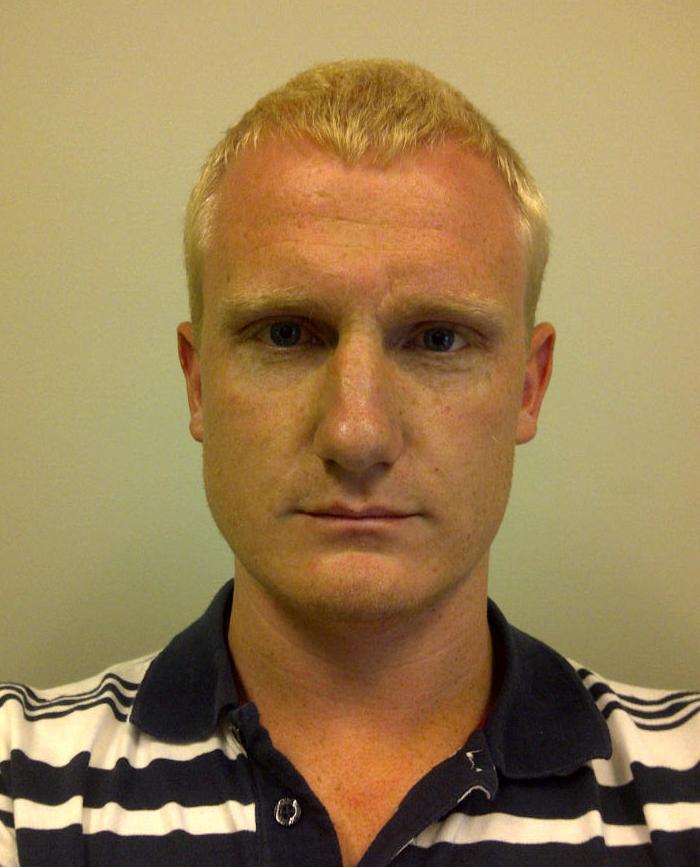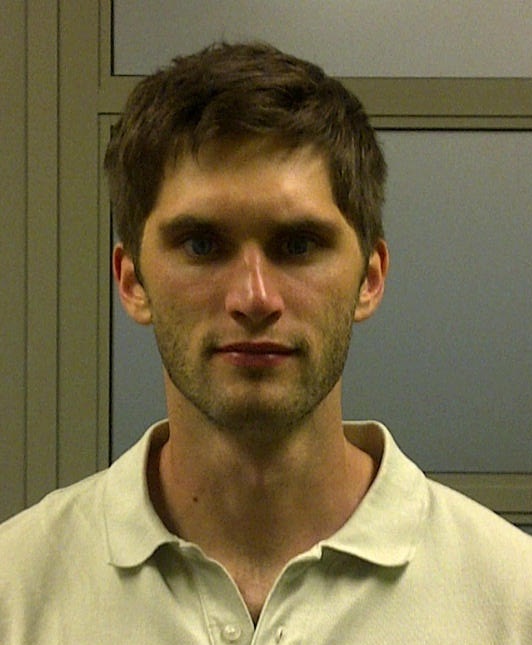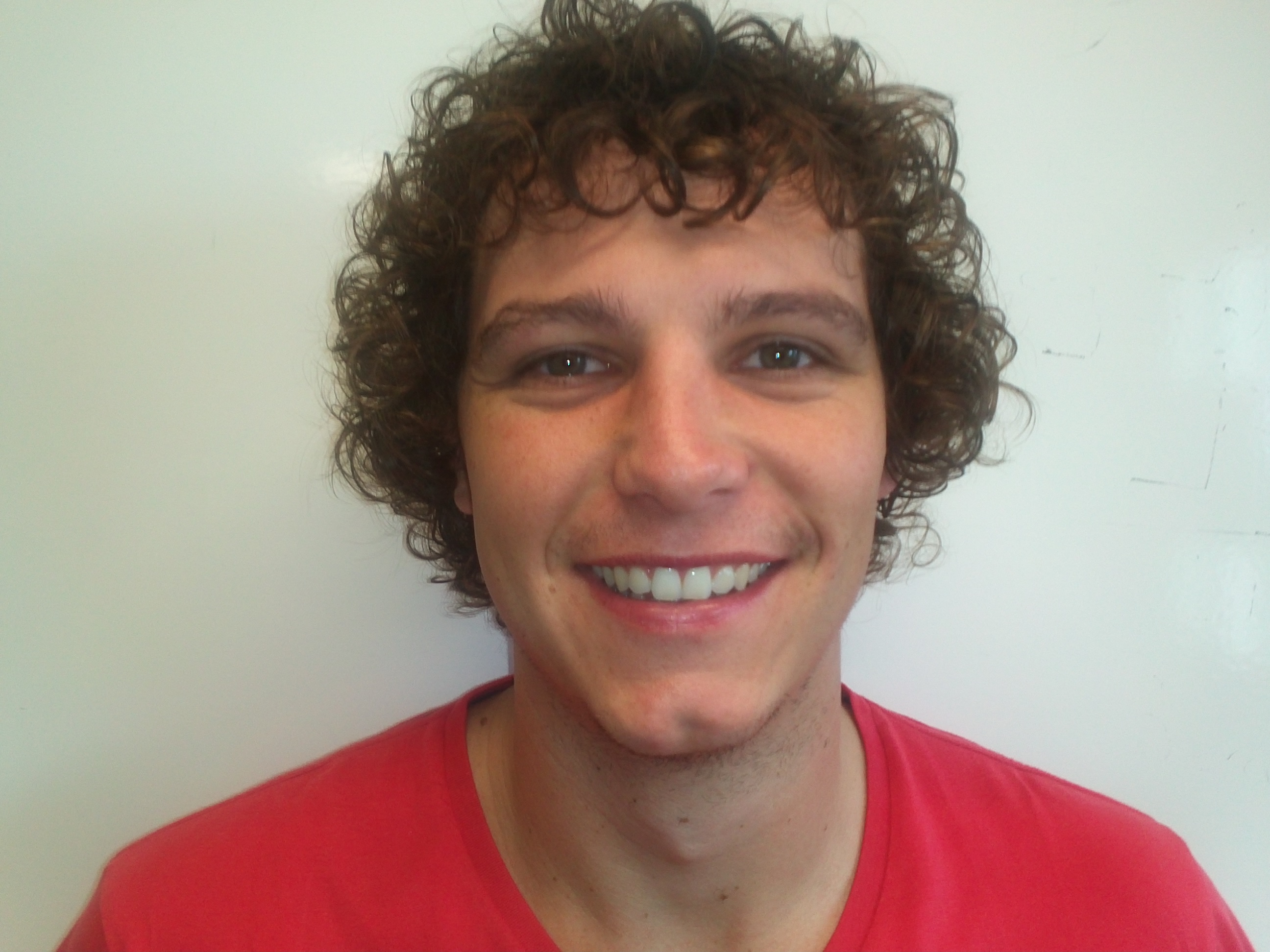
Title: Enhanced boiling in a falling film evaporator
Student: Bradley Bock
Supervisor: Prof. Josua Meyer
Falling film evaporators present many advantages over their flooded evaporator counterparts, such as improved heat transfer at lower heat fluxes and lower liquid charges. However technical challenges remain, both in terms of increasing our technical knowledge of these newer evaporators to levels comparable to their traditional counterparts, as well as characterising their unique attributes.
Studies into the performance of a falling film evaporator using externally enhanced tubes to improve the boiling process will be conducted to further characterize and improve the performance of falling film evaporators.
 Title:Experimental Investigation and Effects of Fin Geometry on Flow Pattern Transition during Refrigerant Condensation in different Inclined Microfin Tubes.
Title:Experimental Investigation and Effects of Fin Geometry on Flow Pattern Transition during Refrigerant Condensation in different Inclined Microfin Tubes.
Student: Ewim D (Daniel)
Supervisor: Meyer, JP
In tube condensation is of significant interest because it finds applications in the air-conditioning, refrigeration, process, automotive, power plants and nuclear industries. It is a complex two phase phenomenon which is very difficult to analyse and this further corroborated by the limited solutions analytical and numerical treatment gives hence the need for further experimental research and the development of new test rigs to determine the heat transfer coefficients, pressure drops, void fraction and two phase flow patterns. In this research, further experiments involving smooth and different microfin tubes at different inclination angles will be carried out and the heat transfer coefficients, pressure drops, void fractions and flow patterns will be gotten and analysed and compared to existing correlations.The objectives of the study are to develop predictive tools for the heat transfer coefficient and pressure drops for convective condensation in inclined tubes and to develop practical design guidelines for engineers of inclined condensers for industrial applications by highlighting general trends of the effect of the gravity on condensation in inclined tubes. It is an extension of the previous work of Dr Stephan Lips and the ongoing postdoctoral research of Dr Adekunle Adelaja.

Title: Experimental study of the effect of nanofluids and the nanostructured materials on convective heat transfer and the pressure drop in heat exchangers
Student: Osman SMM (Sohaib)
Supervisor: M Sharifpur and JP Meyer
Due to the increased operating limits of the heat exchanger, and the increasing demand to remove or dissipating more heat, there is need to either introducing new heat transport fluids or to modify the conventional heat exchanger materials, This research is one of the attempts to address the both sides (heat transport fluid, and the materials modification to the heat exchangers pipes). The research is an experimental investigation and parametric analysis on forced convection heat transfer a under constant heat flux boundary conditions and also for the pressure drop considering different nanofluids , the study is going to investigate also the effect of attaching nanostructed surfaces to the test section on the heat transfer and the pressure.

Title: Heat Transfer and Pressure Drop of Developing Flow in Smooth and Rough Tubes in the Transitional Flow Regime
Student: Marilize Everts
Supervisor: Prof JP Meyer
Heat exchangers are usually designed that they do not operate in the transitional flow regime, mainly due to the uncertainty, perceived chaotic flow behaviour and instabilities in this region. However, changes in operating conditions may cause heat exchangers to operate in or close to this region. Limited research has been done on tube flow in the transitional flow regime and these studies considered either fully developed flow, or average measurements of developing flow across a tube length. Therefore, the purpose of this study is to experimentally investigate the heat transfer and pressure drop characteristics of developing flow in the transitional flow regime in both smooth and rough tubes. Heat transfer and pressure drop measurements will be taken at Reynolds numbers between 500 and 10 000 at different heat fluxes. Water will be used as the test fluid, therefore the Prandtl number will be approximately 7. One smooth and rough test sections with different inlet geometries will be investigated.
 Title: The effect of upstream leakage flow on non-axisymmetric endwall contouring in a turbine rotor stage
Title: The effect of upstream leakage flow on non-axisymmetric endwall contouring in a turbine rotor stage
Student: Barbieri B (Barbara)
Supervisor: Snedden G, Meyer JP
Secondary flow structures are a major source of loss in turbine blade passages. The primary structures with secondary flows include a horseshoe vortex which emanates from the stagnation region upstream of the blade leading edge. One of the legs of this horseshoe vortex remains close to the suction surface of the blade as it travels through the passage while the pressure side leg of the horseshoe vortex moves across the passage driven by the pressure gradient between the blades. This pressure side leg of the horseshoe vortex then wraps around the suction side leg of the vortex creating a large source of loss when combined with additional low momentum flow crossing the passage in the boundary layer. It is the objective of a larger research effort to investigate the design of contour profiles of the hub endwall which attempt to locally reduce the pressure gradient on the endwall and thereby influence the strength of the secondary flows resulting from the movement of the low momentum fluid and pressure side horseshoe vortex across the blade passage. Several experimental and CFD studies have shown that the method works in cascade and rotating test rigs. The current study aims at investigating the disruptive effects of secondary coolant circuit leakage flows found in real gas turbine machines on the effectiveness of these endwall designs. Use of both CFD and a low speed, rotating 1&12; stage turbine test rig with leakage flow injected upstream of the rotor at various representative flow rates is currently underway
 Title: Efficient modelling of aerodynamic flows for high performance computing
Title: Efficient modelling of aerodynamic flows for high performance computing
Student: Smith L (Lelanie)
Supervisors: Craig KJ, Meyer JP
Modern Computational Fluid Dynamics (CFD) codes as applied to modelling aerodynamic flows are to be fast and efficient. When considering viscous flows the boundary layer requires the largest part of computational resources, with RANS turbulence models being the widest employed. Boundary layer approaches on the other hand have received relatively little attention, while having potential of offering considerable computational cost savings. The proposed work will focus on the investigation into the derivation and implantation of a set of unified boundary layer equations for the simulation of turbulent aerodynamic flows. The main characteristics of the proposed equations are that they naturally allow variation of the amount of flow detail included in the model, varying from the simplest form of boundary layer modelling to full RANS.
 Title: An experimental study on the effect of aspect ratio on flow pattern formation, heat transfer coefficient and pressure gradient during condensation in rectangular-shaped microchannels
Title: An experimental study on the effect of aspect ratio on flow pattern formation, heat transfer coefficient and pressure gradient during condensation in rectangular-shaped microchannels
Student: Coetzee JAL (Louw)
Supervisor: Meyer JP
This study is concerned with the flow pattern recognition, convective heat transfer coefficient determination and pressure gradient measurement during condensation in microchannels. In light of the gaps in the literature, the effect of channel aspect ratio of rectangular cross-sectional area microchannels on these three aspects are investigated. The test fluid is a refrigerant, R-134a, which serves well to compare with existing correlations. The mass flux (mass velocity) range from 200 to 1000 kg m^-2 s^-1 and the mean saturation temperature range from 40 to 60 °C. The tests span the whole vapor quality range from 0 to 1.
 Title: Heat transfer and flow field in a rectangular channel equipped with short pin-fins
Title: Heat transfer and flow field in a rectangular channel equipped with short pin-fins
Student: Roux SM (Stephan)
Supervisors: Meyer JP, Mahbub A
The aim of the project is to investigate the effect short pin-fins have on heat transfer and secondary vortical flows in rectangular channels. The objective is to optimise the thermal performance by adjusting the spacing between adjacent pins and the pin diameter. The pin surface will also be indented with dimples and grooves to investigate whether the pressure loss can be reduced and the convective heat transfer coefficient further enhanced. The results of the investigation are expected to be employed primarily in heat exchangers, bearing cooling, micro-channel cooling, electronic chip cooling, and trailing edge cooling of gas turbine blades.
.
 Title: Improving Thermal Modeling of the Linear Fresnel Concentrating Solar Collector (LFCSC)
Title: Improving Thermal Modeling of the Linear Fresnel Concentrating Solar Collector (LFCSC)
Student: Okafor, I F (Francis)
Supervisors: Prof J P Meyer & Dr J Dirker
The increasing depletion of fossil resources and the rising prices of oil, gas and electricity, as well as the environmental concerns related to fossil fuel uses impel both for measures to reduce the energy demand and for technology to produce clean energy. Solar thermal energy technology has been proposed as a solution to lower the dependency on fossil fuel sources due to its significant potential knowing that in the Sunbelt region, the global solar radiation varies between 2000 and 3200 kWh/m2/year. This present study focuses on improving the thermal modeling of the linear Fresnel concentrating solar collector, which is very essential in designing and optimizing the system. The existing models were developed based on the assumption of uniform solar radiation heat flux on the absorber tubes and steady state conditions, which are really not so. The radiation flux distribution is usually higher at the underneath part of the absorber tube followed by the sides and abated from the top, independent of position of the sun. Solar radiations are also known to be transient in nature. The discrepancies between the previous experimental results and the thermal model results of the system could be due to the assumptions of steady state and uniform radiation heat flux on the absorber tubes. The improved numerical model for the LFCSC will be developed based on non-uniform radiation heat flux on the absorber tube and unsteady state flow conditions in the absorber cavity, using FLUENT software package. Solar radiation model will be used in estimating the radiation heat flux at the absorber tube. The effects of non-uniform solar radiation heat flux on the absorber tube heat transfer characteristics will be investigated and the transient behavior of the receiver cavity will be modeled, which are lacking in the literature. The simulation results will be analyzed and optimized, and validated with the experimental and models results.
 Title: Film cooling and endwall heat transfer in a linear vane cascade with endwall fillet and contouring. Student: Shote, AS (Adeola) Supervisors: Gazi, M & Meyer, JP
Title: Film cooling and endwall heat transfer in a linear vane cascade with endwall fillet and contouring. Student: Shote, AS (Adeola) Supervisors: Gazi, M & Meyer, JP
Secondary flows in blade passages account for about 35% of aerodynamic losses in the gas turbines. Also, high heat transfer to the passage walls caused by these secondary flows is responsible for significant thermal stresses and material failure of walls and blades. This work aims on reducing the effects of secondary flows on: (1) the passage pressure losses, (2) the endwall heat transfer, and (3) the film cooling effectiveness in a vane cascade by employing fillet at the vane-endwall junction and contouring the endwall at cascade inlet. Both the experimental measurements and numerical simulation of the passage flow and heat transfer will be carried out in the turbine vane cascade system. The results are expected to contribute to the advance design of high energy efficient turbines.
 Title: Heat Transfer and Pressure Drop in Annular Flow Passages for Transitional Flow Student: Ndenguma DD (Dickson) Supervisor: Dirker J., Meyer J.P.
Title: Heat Transfer and Pressure Drop in Annular Flow Passages for Transitional Flow Student: Ndenguma DD (Dickson) Supervisor: Dirker J., Meyer J.P.
Due to tube enhancements being used to improve process efficiencies, heat exchangers are starting to operate in the transitional flow regime. Unfortunately, heat transfer and pressure drop performances in the transitional flow regime is un-explored for many heat transfer geometries. In this explorative investigation, the transitional flow regime in an annular passage in a horizontal flow inclination is to be investigated experimentally for a single inlet configuration, and annular diameter ratio, but for varying inlet temperatures and varying prescribed heat fluxes on the inner tube surface. Aspects such as annular ratio, inlet temperature and flow rate would be of interest to be studied to some extent.
 Title: Topological optimization of central cavity receivers
Title: Topological optimization of central cavity receivers
Student: Page LG (Logan)
Supervisors: Prof Craig KJ
Central cavity receivers for solar power towers are challenging as far as transferring the heat from solar irradiation to the heat transfer fluid. This study uses topology optimization to provide geometrical configurations that balance heat transfer and pressure drop in an innovative way for this application.

Title: Solar Receiver Testing for the optimization of a small-scale solar thermal Brayton cycle for rural areas
Student : Tamryn Wolff
Supervisor : Dr Willem Le Roux
The problem at hand, specifically in Southern Africa, is that we as a community are consuming more than we can produce in terms of electricity. A small-scale (1-20kW) dish-mounted open solar thermal Brayton cycle provides a possible solution to the problem. Different solar cavity receiver geometries, materials (emissivity, heat transfer properties, reflective properties, etc.), and coatings will be tested, in different conditions, in order to provide the most efficient and effective method of receiving solar heat.

Title: Aerodynamic Loss Reduction in a Vane Cascade with Leading Edge Fillet & Upstream Endwall Contouring.
Student: Keenesh Arnachellan
Supervisor: Dr. Gazi. I. Mahmood.
Secondary flows causing aerodynamic losses and thermal stresses in turbine vane passages affect the energy efficiency and blade failure rate negatively. Recent investigations indicate aerodynamic losses and related thermal stresses in the vane passages can be reduced by employing modifications of the endwall region. There is still scope to improve the effects of the endwall region modifications. In the UP vane cascade test facility, fillet and 2-D endwall contouring at vane leading edge will be employed to investigate the effects on aerodynamic loss reductions. The experimental investigations include measurements of flow pressure and turbulence intensity distributions in the cascade passages.

Two-Dimensional cooling fluid channel distribution obtained by topology optimization methods for solar Breyton cycle applications
Student: Robyn van den Heuvel
Supervisor: Dr J Dirker and Prof JP Meyer
Numerical optimization of the trade-off between the reduction of the fluid pressure drop and the reduction of the peak temperatures in the solid in order to optimise the cooling fluid channel distribution obtained by topology optimization methods for cooling of turbine blades used in solar driven Breyton cycle applications.

Title: CFD simulation and experimental investigation into cavity flow natural convection of nanofluids
Student: Lyn-Ann Adams
Supervisor: Dr M. Sharifpur; Co-supervisor: Prof J.P. Meyer
Nano-fluids is a recent and emerging research field that is based on the premise that suspending nanometer sized particles with higher thermal conductivity in the conventional heat transfer fluid will augment the heat transfer capability of the fluid. Practical results of the addition of nanoparticles to a fluid requires further experimental evaluation in order to establish the impact of different weight loadings and to validate the potential use of nanofluids in various application making use of natural convection in a cavity. Nanofluids have shown more thermal conductivity (which is an advantage) as well as more viscosity (which is a disadvantage). Therefore, the problem is to find the range of volume fraction of the nanoparticles which improve heat transfer. One stable nano-fluid, for the case of natural convection, will be investigated experimentally and numerically.

Topic: Investigation of the Boiling Heat Transfer Phenomena on the Surface of Water Cooled Silicon Carbide Fuel Cladding When the Flow Direction is Vertically Downwards
Student: Waynne Roberts
Supervisor: Prof JFM Slabber and Prof JP Meyer
Traditional fuel-rods used in Light Water Reactors are enclosed in a cladding layer of Zircaloy-4. This material has been used for many years and has become the industry norm. As time has progressed, so has the design of the LWR. One of the limiting conditions which need to be overcome in order to improve the safety, economics and performance of such a reactor is the use of Ziraloy-4 cladding on the fuel-rods.
The objective of this investigation is to perform a comparative study of the boiling heat transfer characteristics on the surface of typical reactor grade Zircaloy-4 and Silicon Carbide tubes.
Title: Experimental investigation of the pressure penalty and convection heat transfer augmentation in a rectangular channel employing wavy porous screen inserts for heat exchanger applications.
Student: Andrew Torr.
Supervisor: Dr. Gazi Mahmood.
This research aims to investigate the effects of porosity and periodicity of the sinusoidal screen insert in a rectangular channel on the convection heat transfer rate and pressure drop across the channel to improve the thermal performance of the heat exchanger employed in the solar panel, energy recovery systems, electronic chips, and machine components. Increased thermal effectiveness directly affects the convection heat transfer, compact size and initial cost of the heat exchanger and small pressure penalty affects the operating cost of the heat exchanger. The thermal performance is thus expected to be superior in the channel with the wavy screen inserts compared to the other heat transfer enhancers employed in the heat exchangers. By measuring the effects on the convection heat transfer rate, pressure drop, and turbulence caused by a wavy screen insert in a rectangular channel with air as the working fluid will help determine the thermal performance of the wavy screen insert. By independently investigating the effects of geometrical properties of the wavy screen insert, such as the porosity and periodicity of the insert, the size and shape of the insert can be determined for the optimal thermal performance and size of the compact heat exchanger.
 Title: Influence of multiple streamwise holes in a staggered array of short pin fins.
Title: Influence of multiple streamwise holes in a staggered array of short pin fins.
Student: Stander R (Rupert)
Supervisor: Meyer JP
Staggered arrays of short pin fins are essential in the trailing edge cooling of turbine blades and improved thermal and hydraulic performance is always desired. The influence of multiple streamwise holes through the pin may increase these performance characteristics by increasing the heat transfer surface area and reduce the pressure losses through the reduction of the wake size.
 Title: Heat transfer and pressure drop over an augmented pin fin array with perforations
Title: Heat transfer and pressure drop over an augmented pin fin array with perforations
Student: Pretorius HJ (Johan)
Supervisor: Meyer JP
Turbine blades are designed with intricate internal flow channels. Coolant gas from the compressor is circulated through these channels to reduce thermal stress on the blades. This effectively reduces the fatigue on gas turbine engine components thus reducing the running costs of gas turbines. Pin fins are used in the trailing edge of turbine blades to increase heat transfer, but the increase in heat transfer is associated with a large pressure drop increase. By means of augmentation of pin fins it is possible to improve the heat transfer to pressure drop ratio over a pin fin array. The aim of this investigation is to experimentally determine the effect on heat transfer and pressure drop if the pin fins are slotted to allow some of the free stream flow to pass through the pin fin.
 Title: Single phase heat transfer coefficients for fully developed flow in tubes under uniform wall heat flux conditions in the transitional flow regime
Title: Single phase heat transfer coefficients for fully developed flow in tubes under uniform wall heat flux conditions in the transitional flow regime
Student: Kotze N (Nicola)
Supervisors: Meyer JP
Extensive work has been done with respect to estimating heat transfer coefficients in the laminar and turbulent flow regimes. However, the behavior of heat transfer coefficients in the transitional flow regime is still not fully understood. The purpose of the study is to gain insight into how the heat transfer coefficient is affected when considering fully developed flow through a tube with uniform wall heat flux in the transitional flow regime. Three different pipes (varying pipe diameters) and two working fluids (water and glycol) will be used utilizing different heat fluxes to obtain experimental results. The local heat transfer coefficient and Nusselt Number as well as the average of each will be determined for the two working fluids. A sensitivity analysis will also be conducted to determine the accuracy of the analytical and experimental data. This data will be compared to the latest literature and used to prove/disprove the accuracy of existing correlations.
 Title: Fluid Performance of a Dimpled Pin-Fin Array in a Rectangular Channel
Title: Fluid Performance of a Dimpled Pin-Fin Array in a Rectangular Channel
Student: Nagar RK (Ravindra)
Supervisors: Spedding GR , Meyer JP & Alam Md. Mahbub
Since dimpled pin-fins were found to have increased heat transfer capabilities, an investigation into the fluid properties surrounding these shallow dimpled pin-fins is conducted both numerically and experimentally. The objective of the investigation is to determine the fluid mechanism that enables the increase in heat transfer provided, by measuring the velocity profiles and the turbulence intensity values, as well as provide a some understanding to allow one to further design pin-fins with various surface configurations such that an increase in heat transfer is obtained. The results obtained for the dimpled pin-fin array is compared to results obtained for the now industrial standard smooth pin-fin array.
 Title: Theoretical and Experimental Heat Transfer Characterisation of Next Generation, Silicon Carbide–Clad Light Water Reactor Fuel Rods
Title: Theoretical and Experimental Heat Transfer Characterisation of Next Generation, Silicon Carbide–Clad Light Water Reactor Fuel Rods
Student: Huisamen E (Ewan)
Supervisor: Slabber JFM
Development of an alternative to current Zircalloy clad light water reactor fuel has been under development for a number of years, with major challenges including the impact strength at low temperatures and end cap bonding under irradiation. These problems have been addressed to a large degree and now it is required to investigate the thermal properties of the typical clad material and the associated heat transfer phenomena, such as operational heat transfer including the evaluation of the boiling curve, the pressure drop phenomena due to the ceramics’ surface effects, for specific operational conditions. CFD models will be validated by experimental results, after which extrapolation to in-core dynamics can be modelled.
 Title: The theoretical and experimental investigation of the heat transfer and pressure drop optimisation on textured heat transfer surfaces
Title: The theoretical and experimental investigation of the heat transfer and pressure drop optimisation on textured heat transfer surfaces
Student: Alfama, MAC (Marco)
Supervisors: Slabber JFM & Meyer JP
The heat transfer on the surface of a light water reactor (LWR) fuel element is of high importance in the optimization of the power conversion thermodynamic cycle. Many schemes have been devised to enhance the heat transfer and current generation reactors all allow some degree of boiling to take place on the surface in order to enhance the stirring action and thereby increasing the heat transfer coefficient or Nusselt number on the surface. This project aims to investigate the effect of a textured surface optimised to increase heat transfer without increasing the pressure drop by breaking up the boundary layer.
 Title : Investigation into waste heat to work in thermal systems in order to gain more efficiency and less environment defect
Title : Investigation into waste heat to work in thermal systems in order to gain more efficiency and less environment defect
Student : Katamba Kanwayi (Gaettan)
Supervisors : Sharifpur M & Meyer JP
In any thermal systems like autobomiles and power plants a considerable fraction of the total consume energy is usually waste in different ways such as: exhaust gas, radiators condenser.
 Title: Sailplane drag reduction using Kutta tail configurations
Title: Sailplane drag reduction using Kutta tail configurations
Student: Schade-Weskott EO (Erika)
Supervisor: Craig KJ and Meyer JP
Computational Fluid Dynamics and experimental wind tunnel investigation into the use of Kutta tails on the fuselage of a sailplane to reduce the drag.
 Title: Investigation of the Boiling Heat Transfer Phenomena on the Surface of Water Cooled Silicon Carbide Fuel Cladding When the Flow Direction is Horizontal
Title: Investigation of the Boiling Heat Transfer Phenomena on the Surface of Water Cooled Silicon Carbide Fuel Cladding When the Flow Direction is Horizontal
Student: Maartens J (Jaco)
Supervisors: Slabber JFM & Meyer JP
Since Silicon-Carbide tubing in reactors is replacing zircaoloy tubing it is essential to understand the boiling heat transfer coefficients in from the SiC piping. Focussing on horizontal flow regimes found in reactors similiar to the CANDU nuclear reactor located in Zhejiang China. The goal would be building a flow loop with a heated piece of SiC piping gathering heat transfer data an to plot the data on a boiling heat transfer curve.
 Title: Passive heat removal from Light Water Reactor (LWR) cores following a major core disruptive accident.
Title: Passive heat removal from Light Water Reactor (LWR) cores following a major core disruptive accident.
Student: Seindis C (Costa)
Supervisors: SlabberJFM & Meyer JP
The project entails removing heat passively from the core of a Light Water Reactor after failure of the cooling system, thus preventing further melting of the core. This design will be based on the current AP1000 reactor and includes the transfer of heat away from the core and the passive dissipation of this heat.
Copyright © University of Pretoria 2024. All rights reserved.
Get Social With Us
Download the UP Mobile App